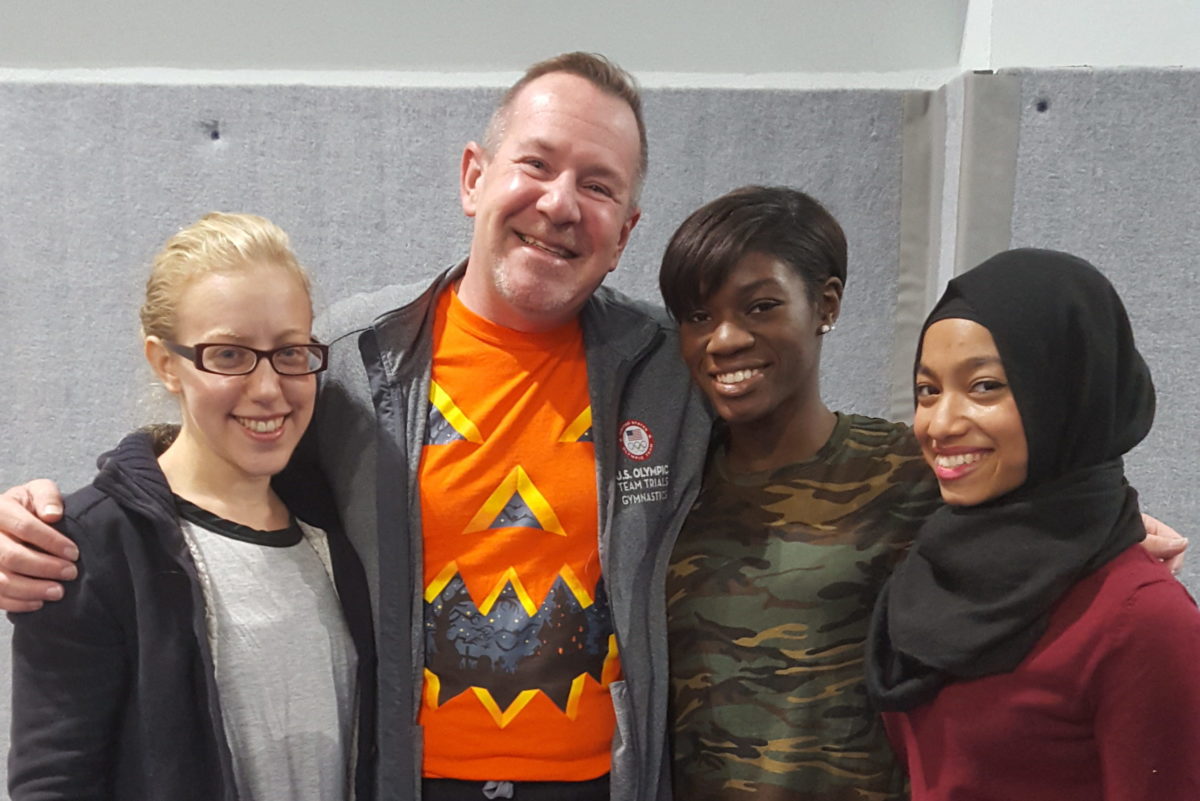Meeting Linda & Brant
I can’t remember exactly the first time I met Linda Thorberg and Brant Lutska of Flipping Education. What I do remember is that I was immediately hooked. Every time I heard they were coming to do a seminar nearby, I made sure to attend.
By now, I’ve attended at least a dozen lectures and events led by them. I even paid for them to come down to our gym to hands-on train in our staff.
Brant and Linda have over 50 years of recreational gymnastics experience between the two of them! They come loaded with tips, resources, and information to improve your coaches and program. Here are some of my key takeaways from this dynamic duo.
1. Get Down to the Child’s Level
As educators, we must find ways to bring out the best in each child. That means we need to recognize each child’s individual capabilities and limitations. And we need to tailor our communication style and the class activities to each child’s ability.
The first thing you need to ask yourself is, what is each child capable of doing and understanding. In a big class, you might need to find ways to quickly assess. For example, ask all the students to do donkey kicks. Now pay attention. Notice the students with high kicks that have lots of upper body strength and the ones that are lower and weaker.
Then, tailor the class activities according to what each individual student can successfully accomplish. Every small success in class will motivate your students to be confident in themselves and to keep trying. Your students will look forward to making you proud, and their parents will re-enroll them in classes next session!
2. Build a Strong Foundation
Focus on teaching the foundational skill-set rather than a particular move. This applies especially to recreational students.
For instance, bars are about upper body strength. Therefore focus on drills that improve upper body strength. Bars are also a great way to improve grip and core strength so work on bar drills that will develop those skills in your athletes.
It is easy to get caught up in trying to teach a child that roll around the bar or a great cartwheel. However, without a strong foundation, your students will never be able to advance. Give them the gift of a powerful foundation. It might not look as flashy but it will take them way farther in both general physical wellness and in sports.
3. Make Safety Fun
Safety should be a part of every lesson plan. Making safety fun and exciting will encourage the students to do it every time. Especially for the young ones. For instance, one idea on how to make safety stops fun is to play a game of “Freeze – Tap your Knees.”
We know you have so much to teach in every lesson, however, skipping safety is just not an option. Safety rolls should be included as a part of the gymnastics circuit. It is so tempting to skip safety for more fun stations. However, we must remember that safety comes first. That’s one of those mantras that everyone says but can be easier said than done.
4. Modify, Modify, Modify
How do your coaches keep their classes dynamic and engaging for every student? They must modify! Teachers must find a different kind of progression for every type of child
Always think in 3’s: Easier, Regular & Harder. Create a version of each drill to accommodate every student in your class.
Success builds confidence. So make sure to set each child up for success. Set up activities that challenge each child’s ability while also within their grasp. If a child keeps failing at a drill or keeps making the same mistake – change things up. Either change the way you explain it or change the drill.
Modify the lesson to ensure that every student accomplishes success. Every time a student is successful they will be motivated to try harder and when they try harder they will be even more successful. Create that positive feedback loop for your students and they will be confident and hardworking athletes.
5. Keep the Class Moving
Kids should always be doing some kind of flexibility or conditioning during setup. How can we achieve this? One idea is to teach partner exercises to the students in your class at the start of the session. This way every time you are setting up or have some downtime you can just tell the students to do their partner exercises.
The Benefits of Gymnastics
The ultimate benefit of gymnastics is acquiring life skills in a fun and safe setting. Gymnastics is not always about “getting that cartwheel, pullover or back handspring.” It’s about building skills to improve every child’s health, wellness, and life.
Some of the skills we teach are physical – building strength, coordination, and body awareness. However, there are many other social, cognitive and character-building life skills that we bring into the gym.
Some keys skills we teach are persistence, cooperation, and teamwork. Always remember that it is important to focus on team building rather than focusing on who is winning or losing. This is how we build a supportive community of athletes and parents.
To learn more about Flipping Education, visit Linda & Brant at https://www.flippingedu.com/

